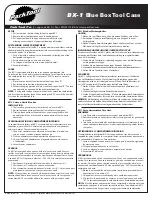Summary of Contents for SDLT220
Page 1: ...TANDBERG Super DLTTM Product manual Revision 2 June 2002 432589 01 ...
Page 20: ...CHAPTER 1 Introduction ...
Page 34: ...CHAPTER 2 SDLT 220 320 Product Information ...
Page 52: ...CHAPTER 3 Drive Specifications ...
Page 76: ...CHAPTER 4 Installing Your Tape Drive ...
Page 92: ...CHAPTER 5 Using Your Tape Drive ...
Page 104: ...CHAPTER 6 SCSI Description ...
Page 120: ...APPENDIX A SDLT I Tape Cartridge ...
Page 130: ...APPENDIX B DLT IV Tape Cartridge ...



































